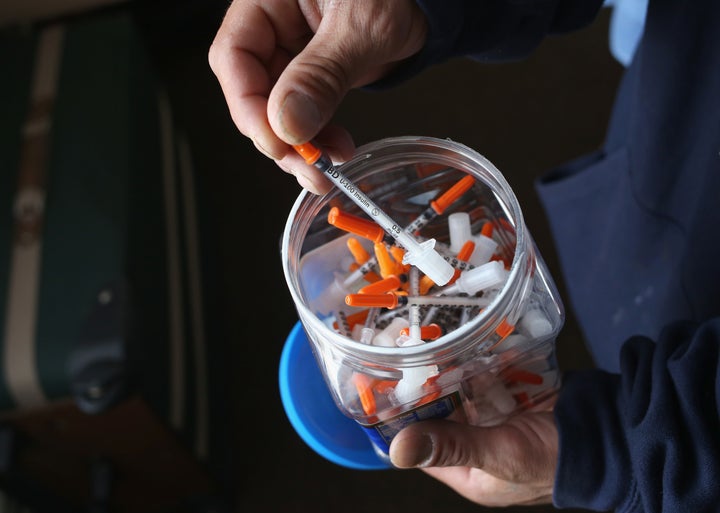President Donald Trump said Thursday that he plans to declare the opioid crisis a national emergency. Clearly, the massive increase in drug deaths warrant a serious government response. But what does a national emergency actually mean?
There are two avenues the president could use for a national emergency declaration. Under the 1988 Stafford Act, the president can get immediate aid to a community or region dealing with a crisis through the Federal Emergency Management Agency. FEMA’s website makes clear that these declarations happen every couple of days and are mostly related to local issues: fires, storms, flooding, gas leaks, and pipeline breaks.
James Blumenstock, chief of health security for the Association of State and Territorial Health Offices, said a major effect of this kind of declaration is getting money from a FEMA-managed fund into communities right away, and making sure local governments get reimbursed for extraordinary expenses.
The other kind of emergency declaration is a public health emergency, which falls under the authority of the Department of Health and Human Services.
These happen much less frequently.

The government’s authority to declare this kind of emergency comes from the Public Health Act, passed in 1944. This was a time when tuberculosis and syphilis were terrifying menaces, and wartime mobilization made a unified government response to threats feel more urgent. The law provided the federal government more emergency powers to declare quarantines, override normal procedures, and fund emergency responses.
In this century, the government has so far declared just a handful of public health emergencies. A dozen were for natural disasters, like hurricanes and tornadoes. They were declared for 9/11, and, oddly, Barack Obama’s inauguration in 2009, when the government needed to direct extra money for dealing with massive crowds in Washington. Then there were two cases of worrisome disease outbreaks ― the flu strain known as H1N1 in 2009, and the Zika virus in late 2016 and early 2017.
Blumenstock said emergency declarations help curb public health threats by freeing up funds and by relaxing regulations governing health care providers. For example, they might release hospital emergency departments from a legal requirement that they treat everyone coming through the doors, allowing them to send less urgent cases somewhere outside a devastated area.
“It allows good medical judgement to prevail,” Blumenstock said.
In the case of H1N1, a nationwide pandemic that might be the closest analog to the opioid crisis, the emergency declaration allowed for faster development of a vaccine, and reduced providers’ obstacles to caring for patients.
“It did what it set out to do ― removed all these routine, unnecessary regulatory procedures so every facility ... could render care under the emergency situation without having to be overly regulated or tied down with administrative procedures,” Blumenstock said.
Using an official emergency declaration to respond to a behavioral health crisis is unprecedented at the federal level. But six states have already pioneered the approach. By declaring opioid abuse an emergency, they’ve been able to offer easier access to the anti-overdose drug naloxone, and monitor doctors’ prescribing practices more closely. Massachusetts used an emergency declaration to reverse a ban on a new painkiller, though a court eventually overturned the move.
A national emergency may replicate some of these efforts. It might also provide more funding for states to combat the crisis and relax Medicaid rules to pay for more treatment. It could allow more flexibility in how federal resources are used. For example, Blumenstock said, public health officials who are paid through federal grants might be permitted to work on the opioid issue, even if it’s outside their normal responsibilities.
“You don’t want to be in a situation where you have these talented, skilled individuals dying to help and respond saying, ‘I can’t do that because I get paid out of this categorical grant,’” Blumenstock said.
But there may also be reasons for caution about an emergency declaration. A paper published in The New England Journal of Medicine about Massachusetts’ opioid emergency declaration pointed out that the powers that public health emergencies can unlock include “deploying military personnel, commandeering property, restricting freedom of movement, halting business operations, and suspending civil rights and liberties.”
To many experts, though, the idea of a federal opioid emergency is less about specific policy consequences, positive or negative, and more about rallying officials and the public around the issue. As Arthur Reingold, a professor of epidemiology who worked on international response to the H1N1 crisis, told CNN: “Typically humans don’t get motivated until there’s actually a problem. ... In this case, this is a problem that has been festering for some time ― and now we’re finally paying attention to it.”